- Welcome to the Ramakrishna Mission Shillong
Secretaries
Secretaries

|
Sl.No |
Name the Secretary |
From |
To |
Photo of the Secretary |
Contributions |
|
1 |
Swami Bhuteshanandaji Maharaj |
1937 |
19.08.1945 |
|
|
|
2 |
Swami Sadhananandaji Maharaj |
19.08.1945 |
31.08.1948 |
|
|
|
3 |
Swami Saumyanandaji Maharaj |
01.09.1948 |
1960 |
|
|
|
4 |
Swami Swayamprabhanandaji Maharaj |
1960 |
14.07.1961 |
|
|
|
5 |
Swami Bhavyanandaji Maharaj |
15.07.1961 |
1969 |
|
|
|
6 |
Swami Ananyanandaji Maharaj |
1969 |
31.08.1969 |
|
|
|
7 |
Swami Abjajanandaji Maharaj |
01.09.1969 |
18.07.1974 |
|
|
|
8 |
Swami Premarupanandaji Maharaj |
19.07.1974 |
07.05.1976 |
|
|
|
9 |
Swami Devadevanandaji Maharaj |
08.05.1976 |
20.06.1986 |
|
|
|
10 |
Swami Raghunathanandaji Maharaj |
21.06.1986 |
27.03.1996 |
|
|
|
11 |
Swami Yogatmanandaji Maharaj |
28.03.1996 |
07.03.2000 |
|
|
|
12 |
Swami Jagadatmanandaji Maharaj |
08.03.2000 |
08.11.2000 |
|
|
|
13 |
Swami Brahmadevanandaji Maharaj |
09.11.2000 |
22.03.2011 |
|
|
|
14 |
Swami Achyuteshanandaji Maharaj |
23.03.2011 |
13.08.2017 |
|
|
|
15 |
Swami Sarvabhutanandaji Maharaj |
14.07.2017 |
7.7.2020 |
|
|
| 16 | Swami Divyalokanandaji Maharaj | 8.7.2020 | 10.8.2020 | 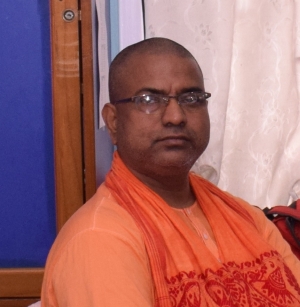 |
Interim Secretary |
|
17 |
Swami Hitakamanandaji Maharaj |
11.08.2020 |
Continuing |
|
|
Birth Centenary of Shri Ramakrishna
In Nov. 1935, a discussion was held with regard to the formation of a general committee and an executive committee for the Ramakrishna Centenary in a public meeting to be held in the Quinton Memorial Hall.
In the year 1936, various cultural meetings were organized in connection with the birth centenary celebration of Sri Ramakrishna. To celebrate the occasion and to take charge of the proposed branch centre of Shillong, the authorities of Belur Math sent Swami Bhuteshanandaji Maharaj, who became the first Secretary of the Ashrama at Shillong and later the 12 President of the Order. The 35-year-old Swami Bhuteshanandaji Maharaj had then just returned to Belur Math after spending two years in study as well as teaching at Mysore Study Circle in South India. Although the main centre was started earlier at Shillong the available accommodation was insufficient. Travelling to Cherrapunjee and Shella was all the harder in those days. In the absence of financial solvency, Swami Bhuteshanandaji Maharaj and his colleagues had to spend days either fasting or remaining half-fed every now and then. Sometimes they had to have their midday lunch at some devotees' house. Notwithstanding such acute hardships, Swami Bhuteshanandaji Maharaj organized the Birth Centenary programmes of Sri Ramakrishna in a befitting manner banking upon the support and cooperation of many learned, well-known and noted citizens of the town. He was helped by Swami Devananda, Swami Chandikananda and Swami Brahmatmananda (Rammoy Maharaj). On the occasion, Swami Sharvananda, Assistant General Secretary from Belur Math and Swami Srivasananda, a scholarly monk, were invited as speakers for the centenary celebration. A grand and colourful procession at Shillong ignoring several odds and obstacles brought the dream of dauntless Swami Bhuteshanandaji Maharaj to reality on the ground.
No sooner than the festive days were over Swami Bhuteshanandaji Maharaj faced hard realities at his new centre of work at the hill resort of Shillong. Along with Swami Devanandaji and Rammoy Maharaj, Swami Bhuteshanandaji Maharaj took the challenge for facing this hardship in the name of Sri Ramakrishna. Shortage of money compelled them to travel by bicycle along the ups and downs of Shillong located in the hilly terrain of East Khasi Hills. Although a new plot of land was purchased through the hard labour of Ketaki Maharaj about a year ago at Laitumkhrah in Shillong, it had not been possible to raise any temple or monks' residence due to a shortage of funds. Hence with the instant cooperation of his monastic colleagues and support from the local devotees Swami Bhuteshanandaji devoted himself to building the new Ashrama.
At first Swami Prabhananda had some objection regarding the question of affiliation of the Ramakrishna Schools at Shella and Nongwar with the Ramakrishna Mission at Belur Math. But later on he agreed to withdraw his objections to the affiliation.
A letter from the Secretary, Ramakrishna Mission, Belur Math carrying the decision of the Governing Body that only the Shillong Committee would be recognized by the Ramakrishna Mission for all work in the Khasi & Jaintia Hills was read out and recorded by Swami Bhuteshanandaji.
On 31 January 1937 in a meeting held in the house of Manoranjan Goswami, Police Bazar, of the members of Ramakrishna Ashrams and Educational Institutions, Khasi & Jaintia Hills, it was decided that Brahmachari Kanai Maharaj (Swami Lokeswaranandaji) be elected to be in charge of the Cherrapunjee R. K. School and that all staff of the School should be under his control. He was also elected as Secretary to the Cherrapunjee School Advisory Committee in place of Swami Bhuteshanandaji.
By this time, Swami Prabhananda was completely relieved of the responsibility for the Institution due to his prolonged illness, which culminated in his sad and premature death at the age of 37 on 12 December 1937. Due to his untiring efforts, the activities of the Mission in the Khasi and Jaintia Hills could make progress, which led to the present state of development.
Temple of Shri Ramakrishna
On 8 August 1937, a tender of Babu Mahendra Nath Sen ( Assam Provincial Engineering Company) for Rs.3274/- (Rupees Three Thousand Two Hundred and Seventy Four only) for the construction of the Ramakrishna Mandir at Shillong was accepted by the authorities of Shillong Ashrama.
In 1938, a small yet attractive temple of Sri Ramakrishna was built ‘for the benefit of all castes and creeds’ through the munificence of Raja Jugal Kishore Birla of Kolkata at a cost of Rs.4,554/- only. The Sanctum Santorum consisting of portraits of Sri Ramakrishna, the Holy Mother and Swamiji on the altar was placed to introduce daily worship, which continues to date without any break.
Monks' Quarters, Kitchen, Library, Hostel, Dispensary
Later on Monks' Quarters, Kitchen, Library, Hostel, a homoeopathic dispensary etc. started coming-up one after another. The residential quarters for monastic members were started in the same year and completed in April 1939. Swami Bhuteshanandaji used to stay in one room and others used to stay in the other room of two beds. Swami Shantanandaji Maharaj, a direct disciple of the Holy Mother used to stay at this Ashrama. In 1938, there was a movable partition in the hall. In the smaller portion of that hall, there were two bookshelves, which were then known as library containing 570 Books, 5 Magazines, and 2 Newspapers. Another bookshelf containing of few books in Bengali and English was used for sale. This ‘Library’ was also used for official works. During minor celebrations or spiritual discourses removing the partition, the devotees are accommodated. In addition to this, a kitchen attached with a quarter for the kitchen staff was also there.
A Homoeopathic Charitable Dispensary was started at the Ashrama premises in the year 1940. The dispensary was situated below the Temple premises.
Actually it was located in a small building, where Swami Chandikanandaji Maharaj lived and conducted a homoeopathic dispensary. He was a man with flowing hair and beautiful beard. Swami Bhavyananda, in his reminiscence writes, 'The hair on his head was black, whilst his beard was white. He was quite a character indeed! As a man he was full of energy and life, characterised by the briskness of his movements. … Despite the fact that he had a good voice, he rarely sang in the shrine. Quite often he would round up the children of the locality in mid-afternoon, and proceed to teach them his compositions. His songs were mostly on the Holy Mother, as he was Her disciple, and his room was full of Her pictures. He was a good soul, although quite difficult to live with at times. Sometimes the Ashrama was so full with the noise of children, singing to the accompaniment of Swamiji’s music, that it was difficult to keep peace.'
Another great event during this period was the visit of sixth President of the Order Swami Virajanandaji Maharaj, who came and stayed at Shillong. During his stay for about 4-5 days large number of devotees received Mantradiksha from him. A temporary shed attached to his room with commode facility was raised for his use. From Shillong revered Maharaj left for Sylhet via Dawki where many Khasis took initiation from him.
From a report of the managing committee of the Ramakrishna Mission held in 22nd June 1940, we come to know that it approved the helding of the Laitumkhrah Durga Puja in the Ashrama campus on that year.
On the 1 December 1941, the proposal of Babu Tarani Kumar Purkayastha was considered and it was decided that the Ramakrishna Mission, K&J Hills was prepared to take over the Sobhar New India School provided that the Education Department had no objection to this and it gave a grant sufficient for the maintenance of the institution. Tarani Kumar Purkayastha allowed running the school on the same lines as then but abiding by the rules of the Ramakrishna Mission.
In the last week of October,1942, Swami Madhavananda, then secretary, Ramakrishna Math & Mission, arrived in Shillong from Gauhati. That ‘evening a public reception was given to him at the Quinton Hall, presided by Shri B.K. Das, Speaker, Legislative Assembly, Assam, after which he spoke at the public meeting at Laban held for the promotion of communal harmony. On the 26th he gave a talk to the Karmi Sangha of the Mission in the morning and delivered a public lecture on ‘Religion and its Practice’ at the Opera Hall presided by Mr. M.A.T. Iyengar, ICS. On the 27th he gave another lecture on ‘Vedanta and Human Problems’ at , ICS,the same place. Mr. S.P. Desai, ICS presiding. On the 28th, the Swami presided at the Quinton Hall, over the prize distribution ceremony of Mission School at Mowkhar. The next day he visited the Ramakrishna Mission High School at Cherrapunji, where he was given one address by the public and one by the students. In the course of his reply he spoke on ‘The Way to Happiness’. Returning to Shillong on the 30th, he gave a public lecture at the Sen (Seng) Khasi Hall on ‘The Message of India’. Mr. A. Khong Pai presiding. On the 31st he left by car for Sylhet, reaching the Mission centre in the evening. (from the News and Reports as published in the Vedanta Kesari, 1942).
From the proceedings of the Managing Committee of the Ramakrishna Mission, Shillong, held on the 23 July 1944 we come to know that the then Secretary of Ramakrishna Mission, Belur Math, in a letter dated 3.6.44 offered permanent recognition of the Ramakrishna Mission High School of Cherrapunjee.
During the decade long tenure of Swami Bhuteshanandaji at Shillong from 1936-1945, he used to go to Cherrapunjee and Shella from time to time. It was really tedious to reach Cherrapunjee by trucks carrying coal and then proceed to Shella on foot along the bridle path across the hilly terrain of the area. Moreover, heavy rainfall of Cherrapunjee added to the woes of the trekker! Swami Bhuteshanandaji Maharaj was absolutely careless for his own needs and comforts. Life at Cherrapunjee was really very challenging in those days. After taking lunch he had to fetch a bucket of water every day from the rivulet down behind the Ashrama for using it during next 24 hours. Recalling these old memories later, Swami Bhuteshanandaji Maharaj used to say: 'Accompanied by Rammoy Maharaj (Swami Brahmatmananda) I used to go to Shella from Cherrapunjee on foot. The footpath was slippery and inhospitable. We used to fall down quite often. Once Rammoy counted that he had fallen more than 100 times. There was neither any shop nor any shelter so to say during this itinerary. It was difficult to buy even a cup of tea during this trekking. Although the throat would be parched every now and then during this long walk it was hard to get even a sip of tea which we eagerly longed for. Once a kindhearted woman gave milk in place of tea. We failed to express in Khasi requesting her to heat the milk little. Rammoy showed the Sun in the sky as told her to make the milk hot like that. But ultimately we had to drink the cold milk there.”
However, Bhuteshanandaji paid utmost attention for completion of the projects initiated by the late Ketaki Maharaj as early as possible. Along with helping tribal children of Shella and Cherrapunjee in the field of education, Bhuteshanandaji Maharaj committed himself preach the message and values of the Indian Culture as vindicated in the life of Sri Ramakrishna. He started collecting funds from Kolkata and Mumbai in addition to approaching benevolent people in Shillong, Guwahati and several other places in the valley of Brahmaputra.
The Durga Puja started by Ketaki Maharaj at Shella in 1931 was perfectly performed by Bhuteshanandaji Maharaj. He also visited various towns viz. Tezpur, Jorhat, Digboi, Nagaon, Mangaldoi, Goalpara, Dhubri, etc. in Assam for collection of funds as also for preaching the Message of the Holy Trio.
In the year 1942 the Headquarters at Belur Math sent Swami Nivrittyanandaji to Shillong to assist Swami Bhuteshanandaji. Rammoy Maharaj went back to Belur Math. Nivrittyanandaji was given the task of cleaning the Shrine and offering light refreshment to Shri Ramakrishna. Then he had to go for collection. Swami Bhuteshanandaji used to go with him to introduce the new monk to the devotees and donors. They used to collect money for two purposes, one for preaching and another for Sadhu Seva. But most of the people of the time used to donate for spreading the message. Mr. Jivanram Goyenka, a prominent businessperson of the period used to donate some quantity of Rice for Sadhu Seva. Placing these in the carrier of the cycle, it was brought through difficult Road of ups and downs to the Ashrama.
Relief works during the period
In addition, under Swami Bhuteshanandaji's leadership the Mission was engaged in relief services at various places in Assam several times. In 1942, Relief work was carried on during the Burma Evacuation because of the Second World War. Swami Bhuteshananadaji Maharaj took the responsibility at Pandu and Amingaon of Assam. It is known that the aerial bombings by Japanese at Rangoon compelled a large number of evacuees take shelter first in Dimapur and later at Pandu (Guwahati). The wife of Andrew Klou, the then British Governor of Assam called Swami Bhuteshanandaji at Governor House at Shillong and requested him to take up relief services among those refugees who were suffering from cholera and pestilence in addition to thirst and hunger as their daily companion. Swami Bhuteshanandaji organized this relief work very soon after discussing the importance of the requirements with the then General Secretary Swami Madhavanandaji at Belur Math over a ‘trunk call’ from Shillong.
In 1945, Relief works at Dimapur, Nagaland were carried out for three months. Witnessing the well-managed relief work of Swami Bhuteshanandaji, Robert Reed, the then Deputy Governer of Assam commented, 'I had no idea that any Indian organisation can do relief in such an organised way.'
In 1945, August 19, Swami Bhuteshananda left Shillong to take charge of Rajkot centre of Ramakrishna Order and in his place Swami Sadhananandaji became the secretary. Swami Sadhananandaji was a direct disciple of Holy Mother. He was an adept in meditation and Japa. He began taking spiritual classes on Upanishads at Harisabha, Laban. Since there was no vehicle in the Ashrama on the period, he had to walk all the way from Laitumkhrah to Laban.
In November 1946, the Shillong Ashrama relinquished a portion of its land, about four feet wide, for the widening of the foot path running from the southeast corner of the Mission compound to the Laitumkhrah Main Road.
The Mission on the other hand requested the Municipality that the Road from its junction with the Arbuthnot Road to the Laitumkharah Main Road be named 'Ramakrishna Mission Road'. Considering the request, the Road was named as Ramakrishna Mission Road.
In 1947, Swami Chandikanandaji Maharaj conducted relief at Dawki for the suffering people from East Pakistan owing to the partition of India. Swami Hridyanandaji Maharaj and Mr. Subodh Chakraborty assisted him for this.
In the meeting of 3 August 1947 of the Managing Committee of Shillong Ashrama it was unanimously decided to constitute the Cherrapunjee centre into a separate branch of the Mission.
Swami Sadhananandaji was in the office until August 1948. From 1 September, he was relieved by Swami Saumyanandaji as Secretary. Swami Saumyanandaji Maharaj, a disciple of Swami Brahmanandaji, was a warm and cheerful person. His ever smiling and loving nature drew many devotees towards the Ashrama.
Cherrapunjee and Shillong as independent Branch Centres
For the efficient management of the expanded activities of the Mission, Cherrapunjee with Shella and Nongwar was made a separate branch centre with effect from the 1 January 1949, under the direct control of the Headquarters at Belur Math.
Expansion of Activities
At the instance of the Headquarters of the Mission, the Shillong Centre under the changed set-up felt the necessity of expanding its activities throughout the state of Assam. Accordingly, some schemes for improvement and expansion of the work in Shillong were taken in hand. With a view to rendering more effective services on these lines it was decided to expand and strengthen the educational and cultural activities in the following directions, namely, (1) Expansion and development of the Library and Reading Room, (2) Construction of a Lecture Hall, (3) A students’ Home for Tribal boys in particular, and (4) a Guest House.
School for Harijans (Dalits)
To educate the Dalits, in 1948, the Ramakrishna Mission started an L.P. School in a Gurudwara at the Harijan or Sweeper Colony at Laitumkhrah. The service was not restricted only in spreading education among Harijans or Dalits, but they were taught other disciplines too.
Durga Puja
In 1949 Sri Sri Durga Puja was celebrated in the Ashrama for the first time under the guidance of Swami Saumyanandaji. The grandest celebration of the Ashrama marked by great enthusiasm from the public and all classes of people joined the function. The idol of Durga placed in a temporary tin shed below the Temple and was worshipped there. Dr. Shailenbabu, who later took sannyasa from Kailash Ashrama, Hrishikesh,Uttarakhand and worked in the Digboy Ashrama, performed the Puja, while Swami Hiranmayanandaji Maharaj, who later became the General Secretary of the Order, took the duty of Tantradharaka.
In 1950, one Amulya Choudhury, a disciple of Mahapurush Maharaj, with his group, came forward and collected money for the Puja. Swami Pranavatmanandaji Maharaj (Pashupati Maharaj) was an authority on rituals and adept in clay modelling. He used to make the clay idol of Durga with the help of a worker named ‘Shani Thakur’ and conduct the Puja as tantradharaka. He was so much involved in the Puja that he could not accept the immersion ceremony in the last day of the Puja. He used to cry like a child while chanting the Visarjana mantra. The short and stocky Pashupati Maharaj trained a Brahmachari to conduct the Puja. He also wrote books on the rituals of Durga Puja and Kali Puja. The procedures outlined by him in his books are being followed even today. On that year, Shashadhar Bhattacharjee was engaged in Chandi Path. Everything of the entire Durga Puja and Kali Puja was supervised and arranged by Pashupati Maharaj. He used to perform the Kali Puja himself. This Durga Puja gradually became a grand affair with thousands of people coming to the Ashrama for the event. Later Swami Prameyanandaji (Ramgopal) Maharaj and Swami Shuddhavratanandaji (Ananda) Maharaj also performed the Puja. Swami Bhaskarananda recalls,
Swami Pranavatmananda “knew how to model with clay very well. Every year he would make beautiful clay images of Divine Mother Durga for the annual worship of the deity in the Shillong ashrama. … Swami Pranavatmananda, as long as he was physically able, would come to the Shillong ashrama every year, and lovingly make the image of the Divine Mother Durga.
The Swami would come to the Shillong ashrama nearly two months before the worship, and would start modelling the image with the help of an assistant, nicknamed ‘Shani Thakur’. After the image was painted it would be draped in a beautiful sari and adorned with decorations. I, along with other brahmacharis of the Shillong ashrama, sometimes helped in decorating the image under swami’s guidance.
Swami Pranavatmananda was also an adept in ritualistic worship. He trained some brahmacharis to perform the elaborate ritualistic worship of the Divine Mother Durga. The worship would be held on five consecutive days. He was always present during the worship as tantradharaka (guide and prompter), and would guide the brahmachari performing the worship.
In course of the worship, the brahmachari had to put a flower smeared with fragrant sandal paste on one of the ten hands of the deity. Swami Pranavatmananda would silently say to himself, “I’ll take it as a sure sign that Mother Durga has become manifested in the image if the brahmachari puts the flower on that particular hand of the Mother.” And invariably the brahmachari would put the flower on the hand chosen by the Swami. Thus he would be 100% convinced that Mother Durga had come and was accepting the worship offered to Her.
On the last day of worship, … during the farewell, Swami Pranavatmananda, overwhelmed by intense spiritual emotion, would shed tears. Like a child, he didn’t want the Divine Mother to go away, leaving him behind. (Life in Indian Monasteries, page137-138)
It is to be mentioned that this puja is continuing with great enthusiasm without any break from 1949. It is also worth mentioning the involvement of Sri Shashadhar Bhattacharjee as either purohit or tantradharak from 1950 onwards till 2019.
East Pakistan Evacuee Relief
The Mission, which came into existence through the service of the needy and poor people, has been always involved in various Relief activities. Among them one was to stand by the Refugees of East Pakistan (now Bangladesh) after the partition. In the month of November, the Ramakrishna Mission, Shillong decided to manage refugees residing at Lumding Junction of Assam Railway. It was also decided that the relief work for the refugees there be undertaken by the Shillong Branch of the Mission. Accordingly an East Pakistan Evacuee Relief was conducted by the Mission through camps in Lunding and Dawki. After facing unparalleled sufferings the refugees from Sylhet District of East Pakistan who were compelled to leave their ancestral residence came to Shillong and Lumding through Dawki were given necessary relief materials and support from the Mission.
Students’ Home at Shillong
Earlier it was mentioned that an Assam type house below the temple was used as Students’ Hostel. This plot of land with a standing house adjoining the Ashrama compound was purchased at a cost of Rs.16,500/- only for the purpose of a Students Home in 1949. The total expenditure on this account including the cost of additions, alterations and equipment came to about Rs.20,000/- only.
Earthquake Relief and the Beginning of Students’ Home
In the year, 1950 almost the entire Assam was shaken by a severe earthquake affecting thousands of life and property. That earthquake mostly affected Upper Assam. On that period under the guidance of Swami Saumyanandaji Maharaj, the then Secretary of Ramakrishna Mission Shillong, a major relief work took place at the affected areas. In the beginning of 1951, two Miri boys namely, Dharmeshwar Pegu and Mukhyanath Patir from North Lakhimpur were brought by Swami Kashikanandaji Maharaj to the Ashrama at Shillong for their studies, who were left orphan on that natural disaster. The two boys were accommodated in the Hostel, which was then located adjacent to the then Library Building as free boarders. The Mission undertook to bear all their expenses including cost of education.
In 1954, a scheme for bigger Students’ Home was initiated to accommodate at least 25 students mainly for the tribal boys together with some non-tribal, so as to give them facilities to mould their lives on the lines of true Indian Culture. Accordingly a building adjacent to the Ashrama premises was purchased in 1956 for the Students’ Home. In order to provide increased accommodation therein and to adopt it to meet the needs the building was remodelled and improved. It is to be mentioned that once Mohun Bagan Club of Calcutta (Kolkata) came to Shillong for a Charity Football Match in aid of the Students’ Home.
Ramakrishna Mission Charitable Dispensary
In April 1950, the Shillong Municipal Board invited the Mission to take up a scheme for the establishment of a Charitable Dispensary on their plot of land at Laitumkhrah to serve people, both tribal and non-tribal, resident in and around Laitumkhrah. The Mission agreed to accept the offer on the condition that the Board would allow the Mission to run the Dispensary according to its own rules and regulations and it would also contribute a non-recurring grant of Rs.6,000/- and an annual recurring grant-in-aid of Rs3,000/- only. The Board accepted the terms of the Mission and undertook to give a grant-in-aid of Rs.3,000/- per year besides paying a capital grant of Rs.5,000/-, by their resolution dated the 30th September 1950.
On March 28 March the foundation stone of the proposed Ramakrishna Mission Charitable Dispensary was laid by Sri Bishnuram Medhi, the then Chief Minister of undivided Assam. Addressing a largely attended gathering, held on the occasion, Medhi assured the Ramakrishna Mission of every help and co-operation from the government. He also said that he considered himself as one of the very rarely fortunate ones who had a Darshana of the Swami in his school days. The report as published in Hindustan Standard writes,
“Laying the foundation stone of Ramakrishna Mission Charitable Dispensary building here last evening in the presence of a big gathering the Chief Minister Sri Bishnuram Medhi assured this great institution of Swami Vivekananda full co-operation and sympathy of the people and Government of Assam for fulfilment of their tasks of serving humanity. Continuing the Chief Minister said that the service and renunciation preached by Swami Vivekananda was essentially necessary today and the band of selfless sannyasis who imbued by that ideal were serving all section of people irrespective of religion deserved the best wishes of all. He said it was Swami Vivekananda who first set example before the world of toleration of religions and it was with that ideal the Ramakrishna Mission served humanity without converting people to any religion.
Sri P. Roy, Vice Chairman of Shillong Municipality announced a non-recurring grant of Rs.5000/- and a recurring grant of Rs.3000/- annually from the municipality for the charitable dispensary.”
The Shillong Times (30.03.1951) reports:
“The Vice-Chairman of the Shillong Municipality Board in his address at the function said that the idea of the charitable dispensary at Laitumkhrah was mooted six years ago but obviously for financial and other difficulties and obstacles Govt. could not find it possible to establish the same. The Municipal Board, on the contrary, had been increasingly feeling the need for such a dispensary in an area right from Laban or Police Bazar to Happy Valley covering Malki, Laitumkhrah, Nongthymmai and beyond with a population of about 17,000 which had none at present. The Board therefore became anxious to establish one in the present site, which after it was obtained from the Govt. in return for the land on which the Laitumkhrah Police Beat House stands, was kept reserved for the purpose but it had not funds enough to meet the cost of the scheme. At that time it was reported to the Board that the local Ramakrishna Mission was interested in such a scheme and the Board, cognisant as it is ‘of the lofty ideals of service and the high standard of humanitarian work of this world-renowned organisation’ contacted it and ultimately the Mission accepted the Board’s offer for which the Vice-Chairman conveyed the Board’s gratefulness to the Mission.”
The buildings were constructed within a very short period at a cost of about Rs.26,000/- Towards this, Hanumanbux Surajmall Kanoi, a tea planter of Ganeshbari, Dibrugarh made a donation of Rs.15,000/-.As per his desire main Dispensary building was named as ‘Hanumanbux Surajmall Kanoi Building’. The local authorities of Messrs’ Shillong Hydro Electric Ltd, Engineers of Messrs Gannon Dunkerly & Co. Ltd and proprietors of Dipak Timber Works also helped for the grand purpose. Manorama Dutta, wife of late B. Dutta, Postmaster, Shillong donated a sum of Rs.2500/- and Mrinalini Paul, wife of A.K Paul, Laban, Shillong donated a sum of Rs.1,000/-. The Government of Assam also sanctioned a non-recurring grant of Rs.12,000 for the Dispensary and it was formally opened on 2nd February 1952. This Charitable Dispensary building was inaugurated by Sri Jairamdas Daulatram, the then Governor of Assam in presence of Chief Minister B.R. Medhi, Swami Vireswaranandaji and Gambhiranandaji. The Assam Tribune (5/2/1952) in its front page writes,
‘The great humanitarian service rendered by the Ram Krishna Mission to the teeming millions of our country was recounted by the Governor of Assam, Mr. Jayramdas Doulatram, here yesterday evening.‘
On the occasion, the secretary of the Ashrama, Swami Saumyananda informed that the Shillong chapter of the Ramakrishna Mission started a small Homoeopathic dispensary several years ago in the Mission compound which served 5316 patients in 1951.
Ever since its inception the Dispensary has been receiving appreciation for its sincere service from its beneficiaries and the local public.
Sarada Samsad
The Mission felt that a large number of children of Shillong needed training on cultural lines through art, music and extracurricular activities. To meet that demand a cultural unit named ‘Sarada Samsad’ started in the beginning of 1951. Swami Chandikanandaji Maharaj took initiative to open this children’s wing. The unit, besides its usual daily classes, held weakly Saturday sittings of music, recitation, literary discourses and other cultural topics with special programmes.
Swami Gahananandaji Maharaj as assistant secretary
In the last week of February 1953, Swami Gahananandaji Maharaj, who later became the 14th President of the Order, came to Shillong Ashrama as assistant secretary. The Ashrama was then preparing for the installation of the marble statue of Shri Ramakrishna in the temple. Soon he took the responsibility of managing the upcoming celebration. Being a cousin of Ketaki Maharaj, Swami Gahananandaji Maharaj, then known as Naresh Maharaj, got the chance to serve the people of the Hills from his pre-monastic life. He saw villagers after visiting Ketaki Maharaj, used to chant ‘Guru Kripa hi Kevalam’. Their deep rooted devotion towards Ketaki Maharaj put a permanent mark in the mind of young Naresh. For this, there was always a soft corner in his mind for the simple and honest tribal people of the Hills. Now he got the chance to serve them again. Later he used to say, “I felt more closeness towards them than the so-called educated and civilized people.”
Since the financial condition of the Ashrama was not sound, so Gahananandaji Maharaj had to go from door-to-door with request to increase the list of monthly donors with the help of another monastic member or household devotee. Some of the donors felt themselves superior and some of them even never hesitated to react harshly or pinch them through words. Gahananandaji Maharaj never bothered it and continued his job with a smile. This spontaneous nature of the Maharaj inspired others whom he took with him to remain calm in opposite situation.
There held spiritual discourses on each Sunday at Shillong Ashrama, which was regularly attended by many devotees. However, at the same time it was hard to attend the discourse regularly for the people living far away from the Ashrama. So Gahananandaji Maharaj took the responsibility to cover peoples of different areas. With a book in hand, he had to go by bus or by foot to reach the areas and communicate the peoples to spread the message of the Holy Trio.
Marble Image of Sri Ramakrishna
On the 25 March 1953, a marble image of Sri Ramakrishna was installed in the temple in the Ashrama premises. A weeklong celebration with a variety of programmes took place on account of installation ceremony of the Statue. To grace the occasion along with Shrimat Swami Shankaranandaji Maharaj, the then President, and Shrimat Swami Madhavanandaji Maharaj, the then General Secretary of the Ramakrishna Math and Mission, Belur Math, Swami Nirvanananda, Swami Shashwatananda, Swami Vimuktananda, Swami Ranganathananda and some other senior monks of the Order came.
On the day on which the image was installed in the morning by His Holiness Shrimat Swami Shankaranandaji Maharaj, the President of the Ramakrishna Order, there were special puja and Homa in the morning and Kali Puja at night. The installation itself was marked by simple ceremony in which the sannyasins assembled about 20 in number, led by the President Maharaj walked in a procession carrying the portrait of Sri Ramakrishna round the temple, the gates of which was thereafter opened to the public after the statue had meanwhile been unveiled by him.
Divine Relics placed in the Altar
According to Swami Raghunathanandaji Maharaj, the tenth secretary of Shillong Ashrama, in 1958 or 1959, Naresh Maharaj (Swami Gahananandaji Maharaj) brought some nails and hairs of Shri Ramakrishna and the Holy Mother and placed it in the alter of the marble statue of Shri Ramakrishna.
Birth Centenary of the Holy Mother
The year 1953 closed with the formation of a representative committee from all sections of people to celebrate the Birth Centenary of the Holy Mother Shri Sarada Devi. The five-day centenary celebrations started at Shillong on the 10 March 1954 with the opening of an exhibition. Thousands of people visited the exhibition, depicting the life and teachings of Shri Ramakrishna and the Holy Mother from all parts of Khasi and Jaintia Hills. The celebration concluded on 14 March with a grand Narayan Seva.
The Second and concluding phases of the Celebrations took place in December 1954. The programme included essay competition, public meetings and discourses in various parts of the town. Similar celebrations were organized by the Shillong Branch of the Mission in 21 other places of Assam, Manipur and Tripura. On the centenary celebration, a short life of the Holy Mother named ‘Shri Ma Sarada’ in Assamese was published. The Celebration also held in Shella under the supervision of Swami Gahananandaji Maharaj.
Vivekananda Library & Reading Room
During the year 1953 a hall for Reading Room with back rooms for accommodating the Vivekananda Library was constructed. The new Assam type building of the Vivekananda Library and the Reading Room was formally opened on 26 January 1954.
Construction of Guard Wall
The retaining wall on the eastern side of the compound was built in part in 1953. The remaining portion of the wall was completed in 1956. Improvements to the kitchen and the main building were made during 1953-57.
Publications
During the period under review, the centre undertook publications of books in different languages. ‘Chheleder Gaan’ and ‘Sarada Sangeet’ by Chandikananda and ‘Gita Sara Sangraha’ by Swami Premeshananda, an Assemese version of ‘Thus Spake Vivekananda’(Vivekananda Vani) and ‘Vivek Vani’ were published in 1953 and ‘Shri Maa Sarada’ in Assemese in 1954. To meet the demand of the Khasi public, the life of Shri Ramakrishna named ‘U Ramakrishna’ was published in 1955 in the Khasi language by Swami Chandikananda. Prior to this, some books by Swami Prabhananda(Ketaki Maharaj) in Khasi named (1) Sahoj Bangla Shikksha (Parts I & II), (2) Ka kot Pule ki Khynnah (Parts I & II), (3) Ka Jingshna da ka Homiopathik & Ka Biokemic (4) Ki Niam Ki Rukom Durga Puja (5) Ka Ki Ktien u Ramakrishna were published. During the period some other books which were published from the Ashrama are ‘Atmavikas’ (Parts I & II) in Bengali and ‘Shri Ramakrishna Sankirtan’ in Bengali and Hindi. There was then a great demand for Ramakrishna-Vivekananda literature, especially in Khasi and Assamese, but for want of adequate funds, no progress could be made in this respect during the period.
Swami Saumyanandaji succeeded for a few days as acting Secretary. He handed over the responsibility to Swami Swayamprabhananda. He was assisted by Swami Suddhabodhananda, Swami Krishnatmananda, and Swami Bhavyananda. Swami Swayamprabhananda was succeded by Swami Bhavyananda. These happened in a few months between 1960 and 1961.
Visit of Swami Vishuddhananda
In April 1955, the Vice-President of the Ramakrishna Math and the Mission, Shrimat Swami Vishuddhanandaji Maharaj visited Shillong and many places of Assam for the first time. He stayed in Shillong for about three weeks and gave discourses on Indian Culture and Philosophy.
In March 1957 Shrimat Swami Vishuddhanandaji Maharaj, Vice-President of the Order visited Assam for the second time.
A reminiscence of one of the visits as recorded by Swami Bhaskarananda in his book ‘Life in Indian Monasteries’ (pg 42-43) is given below:
Swami Vishuddhananda “had come to our Shillong Centre for a visit. Shillong being mile-high city, was cool throughout the year. Swami Vishuddhananda was then in his early seventies. A junior monk named Paritosh was his secretary and personal attendant. Swami Vishuddhananda was a bit sensitive to cold.
While in Shillong he showered everyday using warm water. The bathroom that he used belonged to an earlier era and did not have cold water faucets. Water had to be heated in the kitchen and put it in the bathroom every time the needed a shower. Paritosh would bring a bucket of steaming hot water from the kitchen and put it in the bathroom. He would also put there a bucket of lukewarm water side by side with a bucket of cold water. When the Swami wanted to raise the temperature of the lukewarm water, he could add some of the steaming hot water to it. If he wanted to lower the temperature of the lukewarm water, he could add some cold water to it. The method for taking a shower was to dip a mug in lukewarm water and then empty it over the body. Swami Vishuddhananda had recently had cataract surgery. After the surgery, he was given special eyeglasses, without which he could not see clearly. When he went to take shower he had to first take off his eyeglasses.
One day he entered the bathroom to take a shower. While inside the dimly lit bathroom, he mistook the steaming hot water and poured a mugful on his body. His skin immediately got scalded. He cried out, “Oops! My body is burnt.” Then after a moment’s pause, he said, “No, it’s okay. It’s the Divine Mother’s will.
His attendant was standing outside the door of the bathroom and heard Swami’s words. He immediately informed the doctor, and the necessary medical help was given to the Swami. That morning the Swami was scheduled to give spiritual initiation to some devotees. That had to be postponed for a day.
In 1960, the communal Bongal Kheda movement broke out in undivided Assam resulting, a large number of victims in various relief camps in Shillong. The Shillong Chapter of Ramakrishna Mission undertook its relief work in a Camp distributing food items including milk and sugar, clothes, medicines and other articles during the period from 27th July to 10th August 1960.
On 11.10.60 Swami Saumyananda, took leave for the period 14.10.60 to 31.1.61. So Swami Pranavatmananda appointed to act in his place. But within a few days Swami Swayamprabhananda was appointed as fourth secretary of the Ashrama by the authorities of Belur Math.
During the period a night school was opened in remote Nartiang village of Jaintia Hills, both for children and adults to educate them through Khasi language. The beneficiary villagers then wanted a full-fledged school to be opened by Ramakrishna Mission. Accordingly in 1960 Ramakrishna Mission planned to construct a School building and staff quarters. For this the villagers themselves gave land and materials for construction. But strangely the district council intervened and raised objection initially on acquiring land without approval of the District Council and later more sarcastically it classified the Ramakrishna Mission as a Non-Tribal body, which cannot occupy Tribal Land. The authorities of the Shillong Centre of the Ramakrishna Mission tried their level best to continue various welfare works including medical, educational and improvement of sanitation in the village. But the District Administration took an adamant role to stop the welfare activities of Ramakrishna Mission.
Swami Swayamprabhananda served as Secretary of the Ashrama for a very short span of few months. He was followed by Swami Bhavyananda as 5th secretary of Shillong Ashrama. Swami Bhavyananda, popularly known as Daktar Maharaj took charge on 15th July 1961. The Library and Reading Room –cum- Community Hall and Durga Mandap was built in the period. In 1962-63, the Centenary Celebration of Swami Vivekananda was celebrated with pomp and gaiety. Several programmes including various competitions, procession, discourses, exhibition on Swamiji’s life, publication of some selected works of Swamiji in Assamese, Khasi, Garo and Mizo languages, musical events and many more functions held on the purpose.
In 1965, a boundary wall behind kitchen was also constructed. During his tenure several developmental projects were launched in the Charitable Dispensary including mobile medical unit. A house was also purchased behind the present dispensary building
Mobile Dispensary
A rural mobile dispensary started its work during the year 1960 at Nartiang, a village about 40 miles from Shillong and famous for its old temple of Durga. Later another centre was opened at Laitkro, about 16 miles from Shillong. Previously it visited the villages twice a week. The Mobile Dispensary which started functioning from 1960, now (2018) serves in twenty-one interior villages.
Swami Bhavyananda was succeeded by Swami Ananyananda in 1969 again for a very short period.
Guru Puja
There was a trend among the devotees of Ramakrishna Order of Shillong to celebrate the birthday of their respective gurus in their own way until early 70’s. As a result the devotees used to celebrate birthday or anniversary of Swami Shankarananda, Swami Vishuddhananda, Swami Madhavananda, Swami Vireshwarananda and others in their house where some monastic members of the Ashrama along with other lay devotees used to take part after being invited. But the authorities of Ramakrishna Math & Mission, Belur Math reacted sharply against this tradition and asked to observe Guru Purnima in a combined way. In a very important letter to one Kshitish Ranjan Talukdar dated 26th July, 1969, Swami Vireshwarananda wrote, “… I am glad to note that all the devotees of Shillong have decided to observe together the Guru Purnima in a combined way instead of what they used to do before, i.e. observance of the birthdays of different Gurus by their respective disciples only. This creates a narrow separatist tendency among the different groups of devotees, each group saying ‘my guru, my guru’— a silly idea. Love, reverence and devotion for one’s own guru is good and necessary but to form a group round him is bad. To break this tendency, the authorities of Belur Math had to stop in our centres the celebration of birthdays of all except those of the direct disciples of Sri Ramakrishna, irrespective of the fact whether or not they were Gurus. For us, Thakur is everything – Guru, Ishta and what not. He is our “Gatir bharta prabhuh sakshi nivasah sharanam suhrit.” This is what we have heard from the direct disciples of Sri Ramakrishna and this is what we tell you also. None of them could bear being addressed as Gurudev. Gurudev was a word not known in our organization before. It is now introduced by the present day devotees. We must remember that all the devotees of Thakur --- whether initiated or uninitiated --- are our near and dear ones. There are many devotees all over India who though not initiated are serving Thakur and his cause in various ways much more than many of the initiated devotees. I hope, therefore, that you have invited all the devotees to participate in your functions. People who say “my Guru” etc. are like fish in a pond happy within its small limits without knowing or caring to know that unless they fall into the Ganga, the mainstream of Ramakrishna’s devotees, there is little chance of their reaching the ocean, the goal. I once again welcome your move to celebrate the Guru Purnima Day with special puja etc. of Sri Ramakrishna who is the real Guru of us all. In the Bhakta Sammelan also, that day in the evening, let there be talks only about Thakur, Maa, Swamiji and the direct disciples of Thakur and nothing about others. Do not allow anyone to talk about the greatness of his Guru. Let him keep it for himself. There is a certain dignity about our Guruvad, so please see that it is not pulled down to the ordinary level by allowing silly talks. This is not Guru-bhakti. To mould one’s life according to the Ramakrishna ideal by following silently the instructions given by one’s Guru is real Guru-bhakti.”
From a report of Guru Purnima and Bhakta Sammelan Committee meeting held on 17-08-1969, we come to know that the committee was authorised to spend Rs.15/- only for offering naivedya to Shri Shri Thakur on the birthday tithi of Shrimat Swami Shivanandaji, Shuddhanandaji, Virajanandaji, Shankaranandaji, Madhavanandaji, Vireshwaranandaji and Nirvedanandaji Maharaj at the local Shri Ramakrishna Ashrama. Later on this system was also discontinued to concentrate only on the Holy Trio. On the other hand, following the consequent events the authorities of Belur Math issued a circular throughout its centres to stop such type of Guru Puja, if there is any to avoid sectarianism and conflict within the devotees of Ramakrishna Order.
In the month of August of the same year Swami Abjajananda became the secretary of the centre. At the very beginning he noticed the increasing number of devotees. In the year 1970, the front portion of the temple was extended without affecting its original beauty. In 1971, Indo-Pakistani War broke out during the Liberation War in East-Bengal resulting large refugees mostly Hindus who left their land and took shelter in India. Seeing the miseries of the refugees the Shillong Centre of Ramakrishna Mission extended its relief work in a grand way.
From 19 July 1974, Swami Premarupananda took over from Swami Abjajananda as secretary. He tried to improve the financial situation of the Ashrama.
In 1976, Swami Devadevananda took over as secretary. During his time, the new house at the second level of the Ashrama housing a library and a hall for Durga Puja and other celebrations. On 29 October 1984, Swami Gahananandaji Maharaj, then one of the assistant secretaries of Ramakrishna Math & Mission, Belur Math laid its foundation stone and Most Revered Swami Gambhiranandaji Maharaj, President, Ramakrishna Math & Mission, Belur Math, inaugurated the new building on 6 October 1985. Since its inception the Dispensary has been receiving appreciation for its sincere service from its beneficiaries as well as the local public. From a report published in the year 1987, on Golden Jubilee Celebration we come to know that it has a well-equipped pathological Laboratory, an X-Ray unit, Electrotherapy section and also the Allopathic and the Homeopathic departments. Minor surgical operations are done here besides an eye section where patients are treated twice a week by a qualified Eye Specialist.
After Devadevananda, Swami Raghunathananda became the secretary. Swami Raghunathanandaji took up the remaining work of the construction of the Library building, mandap for Durga Puja etc. He shifted the office and the Book Stall to the first floor of the said building. However, there was no plan regarding how to utilize the open space at the roof of the building. He wanted to utilize the roof-space and planned and constructed the office by using the doors and windows salvaged from the old library hall.
He also planned and made a shed in the front of the temple so that the devotees could stand on a rainy day if they do not get a chance to be seated in the temple during special occasions. During the period Swami Baneshanandaji was looking after the Students' Home. He extended the Students' Home by cutting a portion of the hill.
Quinton Memorial Hall
Major development which took place during his tenure was the conversion of Quinton Memorial Hall to Ramakrishna Mission Vivekananda Cultural Centre. The public hall was erected in the year 1892, to be used by some eminent clubs of Shillong, such as Shillong Indian Club and Sahitya Sabha etc. It was razed to ground in the earthquake of 1899 to be rebuilt the following year. Again it was totally burnt out by a devastating fire in 1900. The hall was rebuilt again by 1901 which was inaugurated by none other than Swami Vivekananda. From that day onwards the Hall served the people in different ways and continued to be run by different local committees.
On 10 Sept 1908, Sri Kailash Chandra Das, who was then Secretary of the Quinton Memorial Hall Committee and a resident of Laban, Shillong, made a Deed of Trust and the Quinton Hall with its land, etc. became a Trust for the use and benefit of Shillong Indian Club and the Assam Bengal Theatre Party, which were engaged in the cultural and social welfare activities. Henceforth the hall was entrusted to a trust named ‘Quinton Memorial Hall Trust’. Many eminent personalities including Rabindranath Tagore, Annie Besant, Acharya Prafulla Chandra Roy, Netaji Subhash Chandra Bose, Dr. B C Roy and many others graced the hall with their kind presence and illumined eloquence.
The Quinton Memorial Hall Trust with due diligence continued to function till the outbreak of the Second World War. The Hall with its premises was requisitioned during the period for use and occupation of the Air Raid Precaution Organization. But after the War, the Government did not vacate the Quinton Memorial Hall premises and Administration continued its occupation through the Supply Department. The Hall was thus converted into a store and supply depot. Finally, the Administration vacated the Hall in a dilapidated condition. Now the concerned Trust felt need to renovate the Hall. Thus to raise fund for the purpose, the Hall and its premises was given in rent to a Mobile Cinema owner for a very temporary period. The Hall was then converted to a Cinema Hall, ‘Singhania Talkies'. But ignoring its condition they also continued to stay and did not vacate the Hall and its premises even after long persuasion. Thus a suit was filed in 1956 for their ejectment. During the protracted litigation extending over a period of nearly 4 decades from the lowest to the highest court of the country, the two beneficiary bodies ceased to exist, the Trust after good deal of deliberations and consideration unanimously decided to handover and settle the property for ever to the Ramakrishna Mission for its absolute use and occupation for its benevolent activities.
The Ramakrishna Mission also cordially accepted the offer and proposed to prepare a scheme for the utilization of the property by establishing a Cultural Institute. On 15 June 1993, Sri J. N. Choudhury, Secretary, Quinton Memorial Hall Trust, proceeded to Belur Math along with all the members of the Trust to sign and execute the Deed of Conveyance to the Ramakrishna Mission and the Deed was executed at the Headquarters at Belur Math in the presence of Swami Raghunathanandaji, the learned counsels Mr. Bishnu Dutta and Mr. Sanat Kumar Roy, and Swami Baneshananda. In order to avoid unforeseen disturbances, Bishnubabu advised the Mission to do the Registration of the transfer of property in Kolkata. During those days Swami Baneshanandaji was working at the Headquarters Law Department. At the request of Swami Raghunathanandaji he made arrangements for the Registration at Belur Math itself by contacting the trustees who lived in Kolkata at that time. All the other Trust members travelled to Belur Math from Shillong for the purpose.
The Belur Math authorities directed to utilize the property on the model of Ramakrishna Mission Institute of Culture at Golpark in Kolkata. So after taking the possession of the property, it was renamed as Ramakrishna Mission Vivekananda Cultural Centre. The activities started by opening a Reading Room and a Meditation Hall where weekly discourses were held.
In 1996 Swami Yogatmananda became secretary of Shillong Ashrama. He was mostly remembered by the devotees for his eloquent speech and ability to explain the vedantic doctrines in a simple way. His classes on Ramacharitmanas attracted many devotees in Ramakrishna Mission Vivekananda Cultural Centre. The diamond jubilee Celebration of Ramakrishna Mission, Shillong was celebrated during the period. A regular library, which was later named as Brahmananda Library started functioning from 13th May 1997 and a branch of Ashrama’s Charitable Dispensary, was also opened at Ramakrishna Mission Vivekananda Cultural Centre. Acute water crisis was a regular problem for the residents of the Ashrama. To solve the problem an underground sump of about 2 lakh litres capacity was made to collect rain water.
Swami Yogatmananda served the Shillong Ashrama till 7th March 2000. Thereafter Swami Jagadatmananda took charge from him for a short span of eight months.
During this period the Mission took several developmental projects mainly in the field of Education and Health. Besides the kitchen and Sarada Bhawan’s three storied RCC building another three storied RCC building was raised for the Hostel Students. This new building of the Students‘ Home was inaugurated by Swami Prameyanandaji Maharaj, Vice-President, Ramakrishna Math and Ramakrishna Mission on 3rd July 2010.
Expansion of the Dispensary
In 2001, Ramakrishna Mission, Shillong received a substantial sum of Rs. 3.8 Crore from the estate of Late Ashok Sureka and Anita Lyngdoh. Actually, Ashok Sureka, his wife Anita Lyngdoh and their only child Ishana Lyngdoh died in a tragic plane crash in Nepal on September 5, 1999. As per deed of family agreement entered into by the legal heirs of the deceased the proceeds of all the investments in Fixed Deposits in the name of the deceased is to be paid to the Ramakrishna Mission, Shillong for charitable work. Mrs Evelyn Guha Lyngdoh, the lady who was the sole and real inheritor of this Khasi Estate used to live in Kolkata at that time. She was contacted by Swami Baneshanandaji. She visited Belur Math and in the meeting she agreed to donate half of the Estate to the Ramakrishna Mission, Shillong.
With the help of this money, Ramakrishna Mission built a 3-storied RCC building in place of the old Assam Type one with more facilities and equipment. The foundation stone of the new building of present Charitable Dispensary was laid on 12 February 2003 and was inaugurated on 17 March 2007 by Most revered Swami Smarananandaji Maharaj, the then General Secretary of Ramakrishna Math & Mission. Now other than pathological Laboratory, X-Ray unit, and also the Allopathic and the Homeopathic departments the Dispensary is having its separate Medicine, Eye, Dental, Paediatric, Physiotherapy, ENT, Ultrasound, ECG as well as Ayurveda department also. It provides free medicine and almost free service and treats about 90,000 patients and another 27,000 patients in remote villages through its Mobile Medical Unit.
Upgradation of Vivekananda Cultural Centre
In 2002 after the completion of the present building its activities was greatly expanded under the able guidance of Swami Achyuteshananda. Now, because of its various activities, it has become a household name in the city of Shillong. The activities include:
- Computer Skill Unit: The humble beginning came with the starting of computer training programme in August 2002 under the able guidance of Swami Achyuteshananda. The response to the opportunities provided by the institute has been overwhelming. Some people feel it is an honor to be a part and parcel of this prestigious organization, while for many others it is an opportunity to avail quality computer education in a very subsidized rate. Computer Skill Unit of our Vivekananda Cultural Centre imparts computer software/hardware education to all sections of society. So far it has trained more than 41,000 students including the Mobile Computer Literacy and Personality Development Programme in the remote areas of the State which was started in 2010.
- Art Training Unit: This unit provides Drawing and Painting training for children of age group 7-15 on Saturday during 9:00 am to 5:30 Pm with about 90 minutes per class. Courses are available for four years in a modular basis and new students are admitted each year. The Art Training Unit of the Vivekananda Cultural Centre has so far imparted art training to 2,013 students of the State.
- Language Training Unit: The Institute started Language and Communication Skills training in English, Hindi and Khasi in 2014. It is offered in sessions of 4 month duration. Classes are held from Monday to Friday. Saturdays are usually meant for clearing of doubts and retests. Anyone who has passed class 10 and is within the age group of 16-35 can undergo the training. The maximum strength of each batch is 25 students.
- Sanskriti: In the year 2006, keeping in mind the need of value education and Indian Culture to be imparted to children, the Institute introduced a programme ‘Sanskriti’. The training is held on Sundays afternoon to children of age group 8-12 for a period of 3 years. The training is imparted in Bengali medium. The goal of this project is to impart traditional values through yoga, meditation, recitation, storytelling, games, chanting and singing of devotional or patriotic songs.
- Brahmananda Library and Reading Room: The Brahmananda Library started in 1993 was upgraded on 26 May 2002 as Meghalaya’s first computerized library. It was inaugurated by Swami Gahananandaji Maharaj, Vice President, Ramakrishna Mission. It has about 20,000 books, 6 dailies and 25 monthly magazines. One special feature of this library is the enquiry of book availability as well as the renewal of borrowed books over telephone.
- Youth Forum: In July 2002, Vivekananda Youth Forum was formed to hone the youth talent and to provide them with a platform to express themselves, and train enthusiastic minds to take up noble activities in an organised manner. Youth of the age group 15 to 35 gathers in the Institute on Sundays for self-development and discussion on relevant issues. Boys and girls assemble separately on alternate weeks.
- Service to Mankind: A group in the name ‘Lend Thy Hand’ was formed in 2015 for the poor and downtrodden. The group of selected students and ex-students visits houses of the economically challenged, share their sufferings and provides food, medicine and education according to their need. The activities of this group are tentatively carried out on second and fourth Saturday of every month.
- Cultural Competition: During the first Durga Puja Celebration of the Shillong Ashrama in 1949, the Annual Cultural Competition Programme actually started. This programme attracted many participants throughout the city and because of its increasing popularity and the unbearable workload during Durga Puja it was then made a separate event. From then this Annual Cultural Competition was organised separately in the month of June/July at the Ashrama Premises. In 2004 the venue of the Annual Cultural Competition was shifted to Vivekananda Cultural Centre. This competition includes drawing, recitation (in various languages), elocution, debate, quiz, vocal music etc. Now-a-days the number of participants increased to more than 3500 which is considered as greatest event of this type in the state.
Other than these, several other activities and programmes including weekly Spiritual Discourses, National Youth Day, Foundation Day, Teacher’s Day, Children’s Day, Excursion and many more are held in the Institution.
Considering the increasing demand of involving more people in providing Computer Training, Art Training, Language Skill Development, Youth Forum, Sanskriti (A Training for Children on Values and Indian Culture) and various other children and youth oriented activities, the need of an annexed building was realised and the work on it is going on.
After Swami Brahmadevananda, Swami Achyuteshananda took over the charge on 23rd March 2011. Other than the above mentioned activities of RKMVCC, the period of Girija Maharaj, as he was popularly known was quite eventful.
Book Stall
Earlier it was mentioned that the Book Stall was attached with the main office of the Ashrama in the first floor of Vivekananda Library cum Hall and Durga Mandap. Now realizing the need to attract new devotees through Ramakrishna Vivekananda Vedanta Literature, the road facing garage of Mobile Dispensary Vehicle in the Hostel Building was renovated and converted to Book Stall. The Mobile Dispensary Vehicle was accommodated in the garage of the Charitable Dispensary of the Ashrama. This New Book Stall was inaugurated by Swami Tattwavidananda, Trustee, Ramakrishna Math and Ramakrishna Mission on 7th August 2011.
Sesquicentenary of Swami Vivekananda and Platinum Jubilee of Ramakrishna Mission, Shillong
As a part of Swamiji’s 150th Birth Anniversary the Shillong Ashrama on 2011 took two projects ’Gadadhar Abhyudaya Prakalpa‘ (Integrated Child Development Programme) and ‘Vivekananda Swasthya Parisheva Prakalpa‘(Health Service Project for Mothers and Children) sponsored by Union Government in the remote villages of East Khasi Hills. Atleast 400 people of four villages were benifited by this project. Various events which took place to mark the three yearlong Sesquicentenary anniversary of Swami Vivekananda includes Celebrating National Youth Day in Raj Bhavan, Opening of Employability and Entrepreneurship Trainning Centre and Vivekananda Centre for Youth Councelling, Value Education Teacher’s Trainning Workshop, Regional Tribal & Folk Cultural Programme, Vivek Rath Rally, Bike Rally, Interfaith Dialogue etc. Whereas on the other hand the Ashrama organised a huge prabhat pheri (morning procession) and released the book ‘Swami Vivekananda: The Philanthrophist to mark the platinum Jubilee of Shillong Ashrama.
Construction of Ramp
For convenience of the old and sick monks and devotees for visiting the Temple, a ramp was constructed on the otherside of the steps towards the Temple in 2013. This motorable ramp served many purpose including wheelchair facility for the needed person for going to the Temple, Office, Kitchen etc.
Meditation Room
A meditation room was constructed behind the Temple for the monks during the period.
Pata Parivartana
Another major event which took place in 2015 is Pata Parivartana or installation of new photos of The Holy Mother and Swamiji replacing the old and damaged ones at the Ramakrishna Temple in Laitumkhrah. The installation ceremony was performed by Swami Prabhanandaji Maharaj, Vice-President, Ramakrishna Math and Ramakrishna Mission on 29th August 2015. A Special Puja followed by Havan was performed on the occasion by Swami Tattwavidanandaji Maharaj. The day was very significant as it was a Jhulan Purnima and birthday of Swami Niranjanananda.
Remodeling and Beautification of the Ashrama
The main Office as well as the entrance of Vivekananda Library and guest house in the hostel building was remodeled during the period. Other than these, floor tiles in the area of office, kitchen and hostel was done for the beautification of Ashrama.
In August 2017, Swami Sarvabhutananda took the charge of Shillong Ashrama from Swami Achyuteshananda. This is the first time that the Shillong Ashrama got the privilege to have a secretary who is also a Trustee of Ramakrishna Math and Ramakrishna Mission, Belur Math. Under his guidance the annexed building of Ramakrishna Mission Vivekananda Cultural Centre took its final shape which was inaugurated by Swami Gautamanandaji Maharaj, Vice-President, Ramakrishna Math and Ramakrishna Mission on 27th April, 2018 followed by releasing of Souvenir.


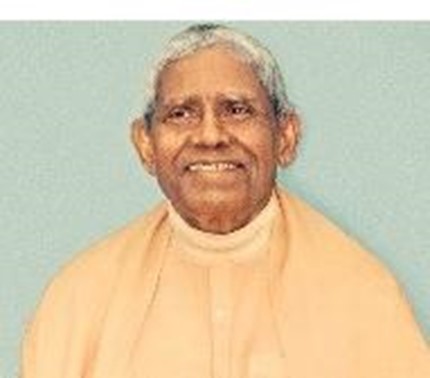
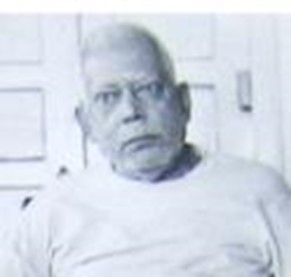
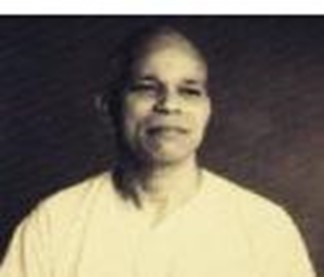

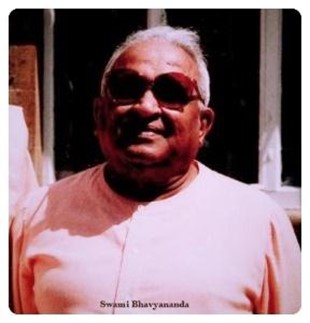
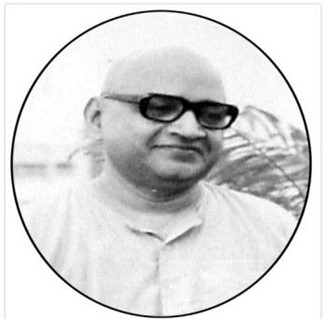
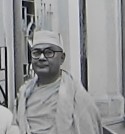
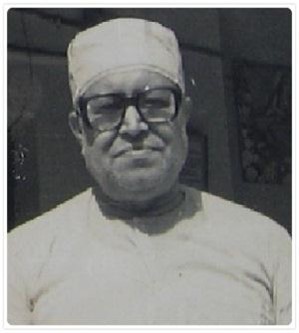
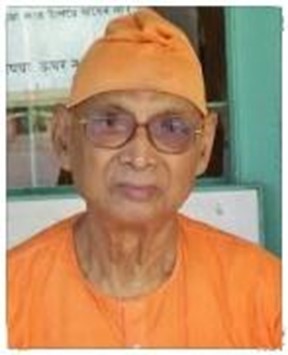
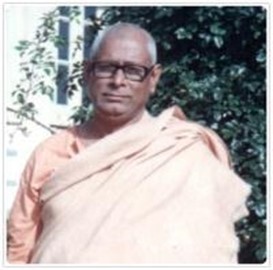
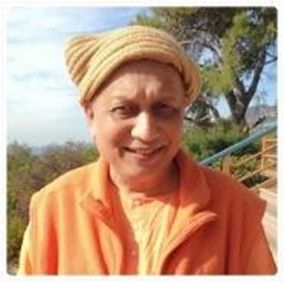
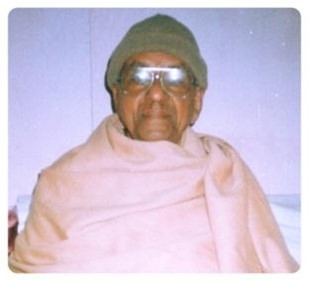
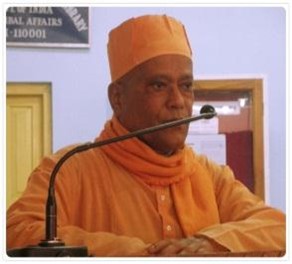
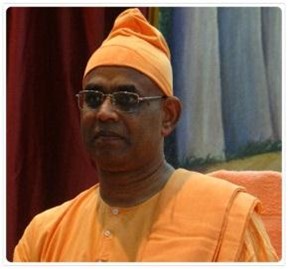
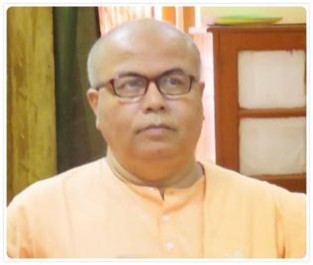
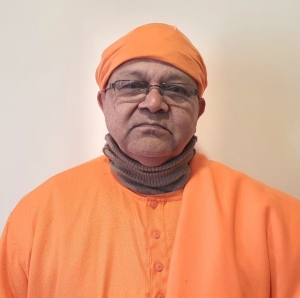


 Vivekananda Cultural Centre
Vivekananda Cultural Centre